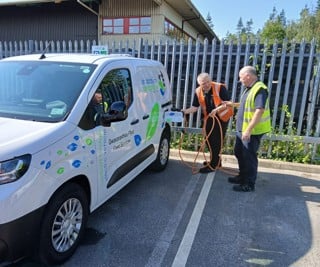Steve Blackburn, European vice-president, Navman Wireless
Human error is a factor in 95% of road accidents, but a higher percentage of resource goes on vehicle roadworthiness and improved vehicle construction.
This is despite the fact that vehicle defects are a factor in just a tiny proportion of collisions.
The big question is: “What is more likely to kill you – your vehicle, the road conditions, or your own driving?”
In recent years, the automotive industry has invested most of its energy into building vehicles that are safer to drive and protect passengers in the event of a crash.
The next evolution should focus on preventing crashes from happening.
Driver behaviour is a key factor in collisions and we need to place the emphasis on improving driver performance in order to eliminate ‘at-risk’ driver behaviour.
We may then see a reduction in the so called ‘big three’ incident types, which include rear-end collisions, intersection crashes and lane change/merge collisions.
Monitoring and improving driver performance when embedded in a safety culture that places greater, or at least equal, emphasis on driver performance as it does on vehicle condition has the potential to greatly reduce human error and therefore the number of road accidents.
We need to make a driver behaviour-focused safety culture a corporate social responsibility (CSR) priority and then the advancement and adoption of ‘smart telematics’ as part of this new so called safety ethos could lead to a dramatic reduction in road accidents.
Responsibilities are shifting and fleet managers are learning that real improvements in safety can be achieved by addressing the factors that most impact the driving culture: attitude and awareness.
There is increasing evidence supporting the idea that instilling a safety ethos is actually good business – saving thousands of pounds per year per driver.
This is a clear case of where an ounce of prevention can save lives and money.
The secondary benefits, fuel and maintenance costs, also make for a healthier bottom line for
the company.

















Login to comment
Comments
No comments have been made yet.